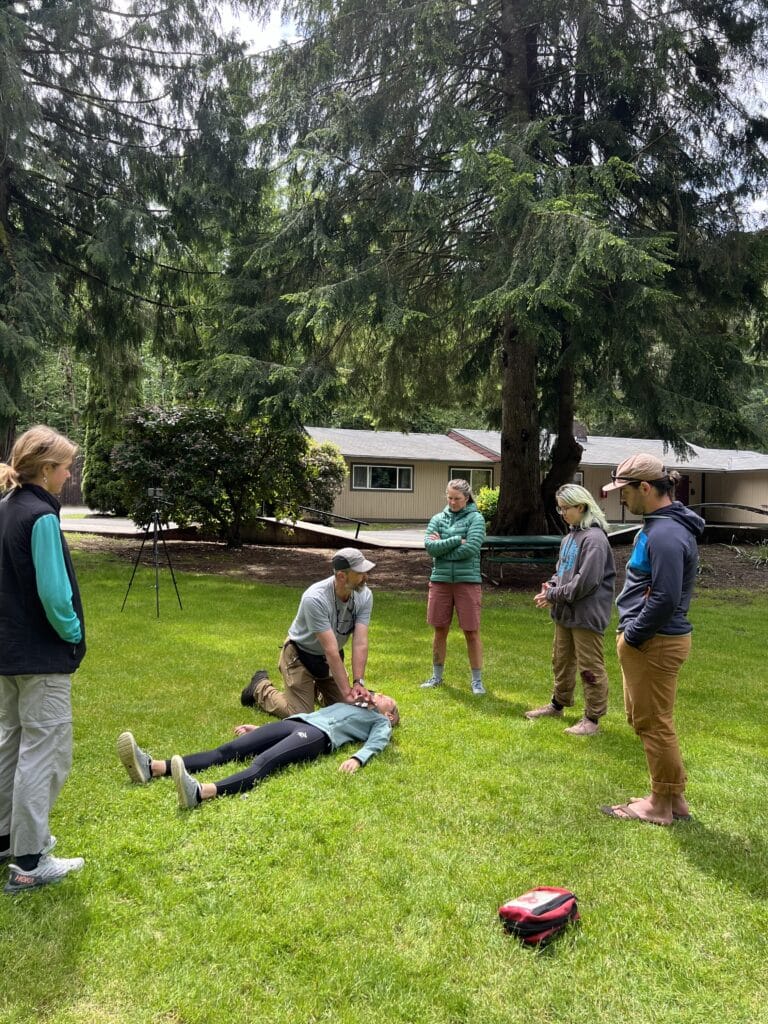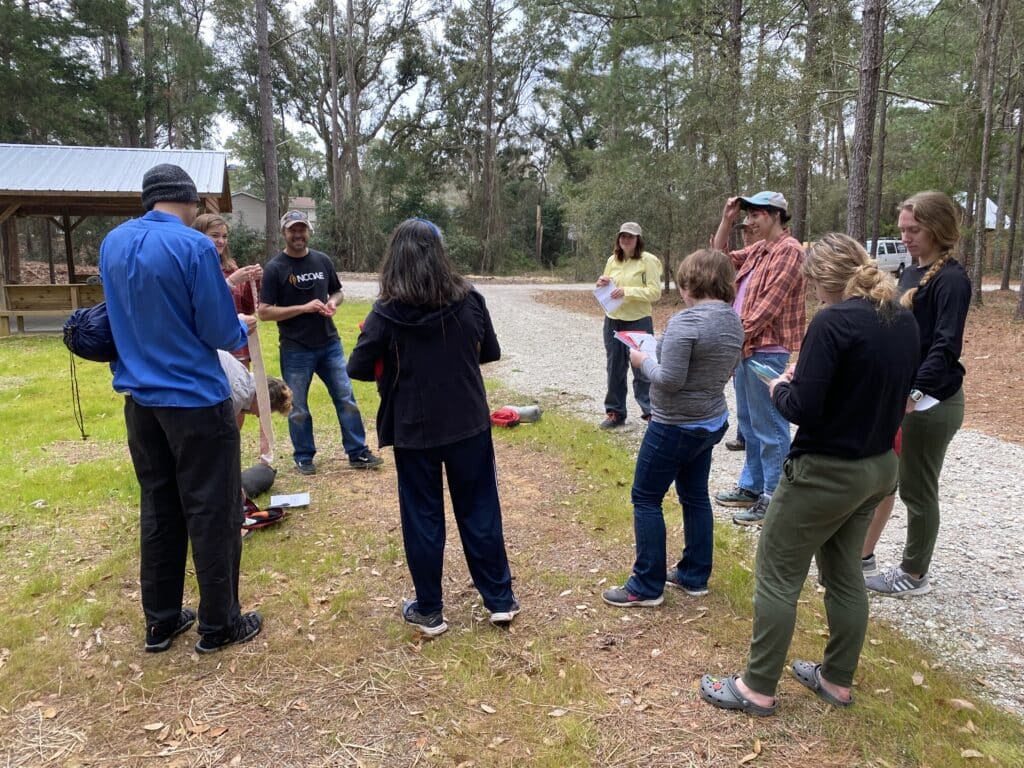Understanding Wilderness CPR
Wilderness MedicineImagine hiking with a small group of friends or family members in a dense, remote forest. You’re ascending a steep, rocky ravine, when suddenly a member of your group, a middle-aged man with a stout build, clutches his chest and collapses to the ground. Everyone rushes to his side, their voices rising in panic. They all reach for their phones to dial 911, but nobody can get a signal. The nearest medical facility is miles away.

The only hope is that someone in the group is trained in cardiopulmonary resuscitation (CPR). Unfortunately, most CPR training is provided in the context of urban settings, including the workplace, community gathering spaces, and our homes. In a remote wilderness environment, responding to a cardio event requires additional skills along with mental calmness and agility — skills and abilities developed and practiced as part of Wilderness First Aid with CPR training.
What Is Wilderness CPR?
Wilderness CPR involves providing life-saving care in remote settings with limited access to medication, medical gear, and emergency medical services. The First Aid component covers everything from assessing situations and injuries/illnesses to treating common injuries, such as cuts, bruises, sprains, broken bones, head trauma, and spinal injuries. It also covers life-threatening conditions that are common in wilderness adventure scenarios, such as hypothermia and dehydration.
The CPR component covers the process of delivering a combination of rescue breathing and chest compressions to help someone whose breathing or heartbeat has stopped.
Wilderness Care Challenges
Providing first aid and CPR in a remote wilderness environment, as compared to an urban setting, presents some unique challenges, such as the following: (more…)
What Is Wilderness Medicine?
Wilderness MedicineWhen the average person encounters the term “wilderness medicine,” they typically assume it is referring to the practice of medicine in a remote or harsh environment with little to no access to medical equipment or supplies.
They may imagine a scenario of providing CPR to someone who suffered cardiac arrest during a whitewater rafting adventure or creating a splint out of a branch and a few strands of twine to help a hiker with a sprained ankle become ambulatory.
While these notions of wilderness medicine aren’t far off the mark, they are limited. In other words, close but no cigar. It’s all the above and more, which makes it a challenge to come up with a clear and comprehensive definition.
Teaching Wilderness Medicine at NCOAE
Here at The National Center for Outdoor Adventure and Education (NCOAE), our wilderness medicine courses begin with a discussion of what wilderness medicine is, as well as what each student hopes to learn from the course. Often, these discussions elicit points of discussion that require an even broader definition of the term.

While there’s no universally agreed upon definition of wilderness medicine, certain components set it apart from non-wilderness medicine. For the purpose of this blog post, let’s begin with the following definition:
Wilderness Medicine is provision of medical care when environmental conditions play a stronger role in decision making and interventions than the established systems of care.
Wilderness Medicine encompasses not only the treatment of injuries and illnesses in these settings but also includes preventive measures, survival skills, and the management of environmental hazards such as extreme weather, hazardous terrain, and wildlife encounters.
Wilderness medicine skills and techniques can be applied in a variety of setting, including but not limited to: (more…)
TALK TO US
Have any further questions about our courses, what you’ll learn, or what else to expect? Contact us, we’re here to help!